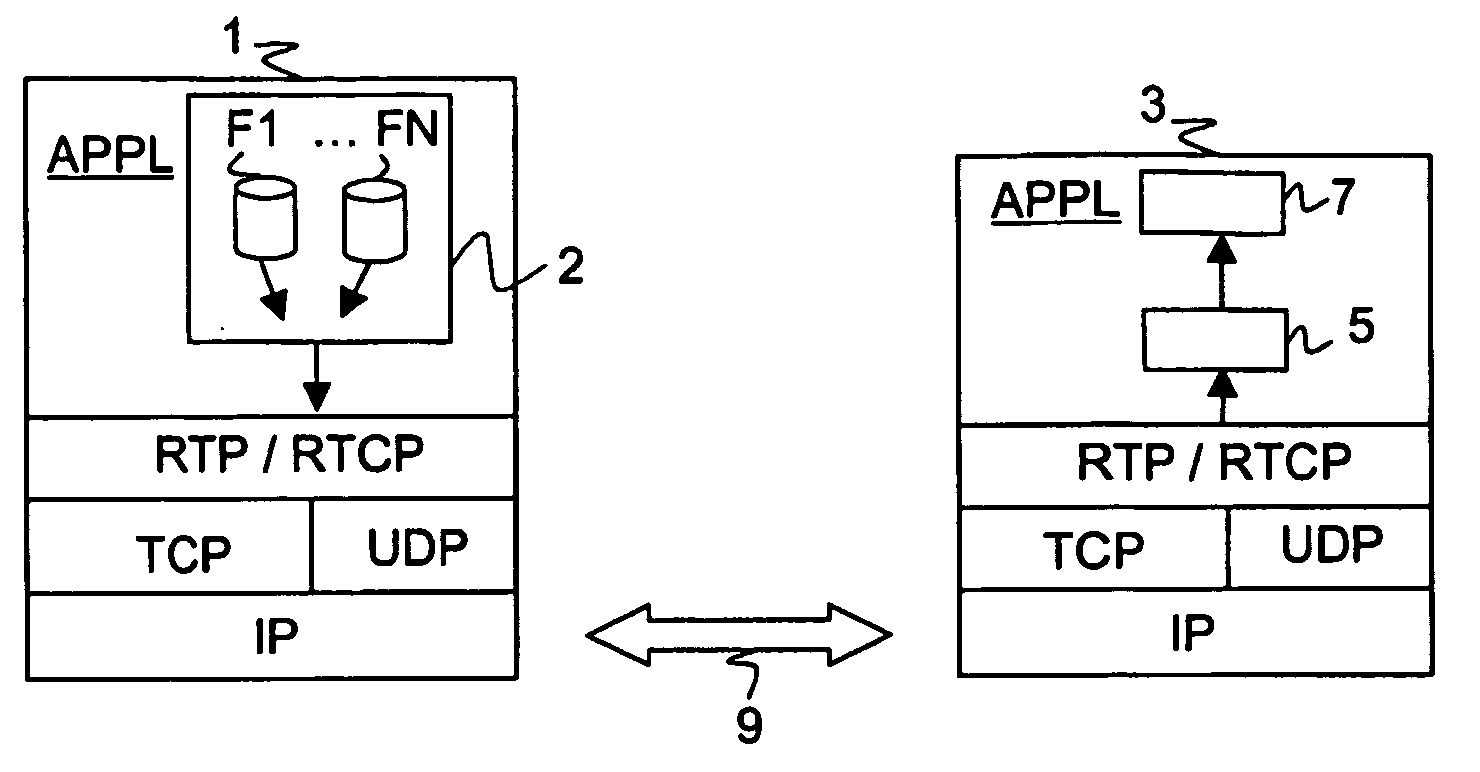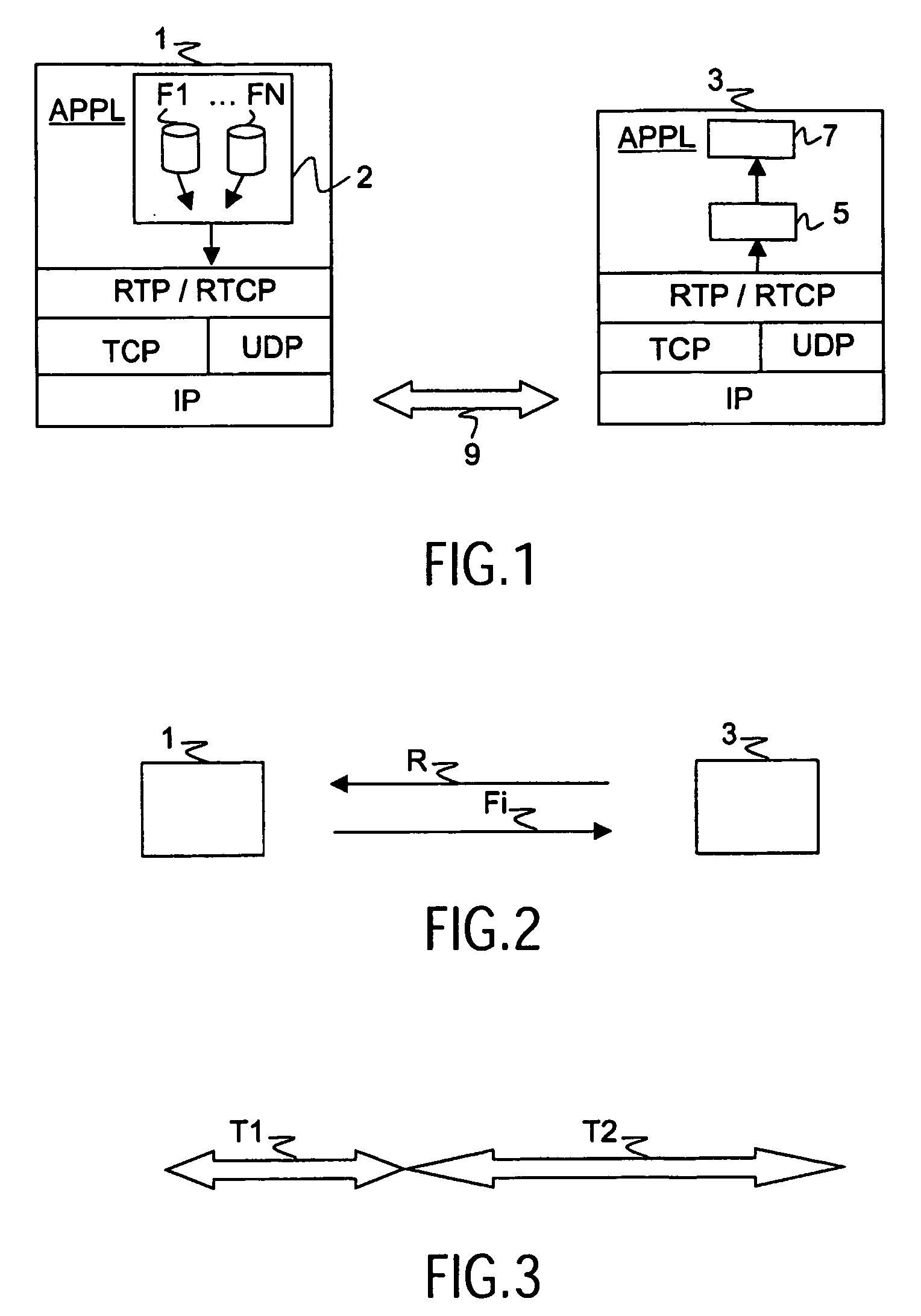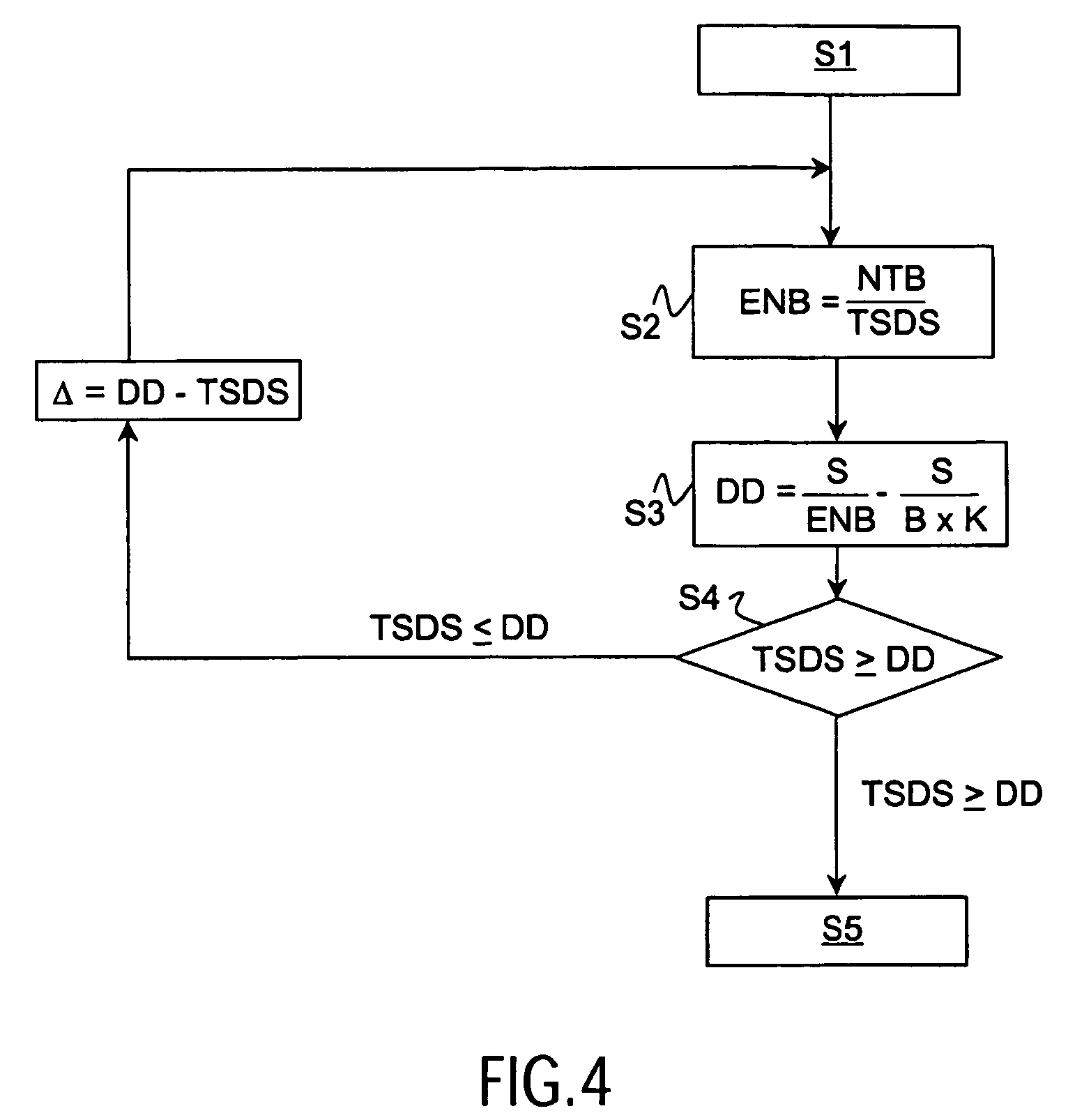Transmission method combining downloading and streaming
a transmission method and streaming technology, applied in the field of transmission systems, can solve the problems of encoding rate of transmitted data files, interruption of audio/video rendering, and latency at the user side, and achieve the effect of improving the quality of rendered conten
- Summary
- Abstract
- Description
- Claims
- Application Information
AI Technical Summary
Benefits of technology
Problems solved by technology
Method used
Image
Examples
first embodiment
[0045] In the invention, the client specifies in his request R the data file he wants to receive.
[0046] For a given data file, the switching point between the first and the second period of time is determined from an estimation of the channel transmission rate so that the second period of time is proportional to the known duration of the content, with a proportionality factor K smaller than or equal to one.
[0047] The determination of the switching point from the downloading mode to the streaming mode will now be described with reference to FIG. 4. According to FIG. 4: [0048] at step S1, the downloading of the data file starts. [0049] at step S2, the current transmission rate of the channel ENB is estimated: ENB=NTBTSDS
where [0050] NTB is the number of bytes that have already been transmitted [0051] TSDS is the time (in seconds) since the download started [0052] at step S3, an estimation DD of the first period of time is calculated: DD=SENB-SB×K
where [0053] S is the size of the ...
second embodiment
[0058] In the invention, the client specifies in his request R an authorized latency time LT, and the server selects the data file to be transmitted depending on this authorized latency time, and on an estimation of the channel transmission rate ENB: B≈(LTP+1K)×ENB
where the sign > means >
[0059] In order to select the data file to be transmitted, the server first has to make an estimation of the effective channel transmission rate. This is achieved by sending learning data to the receiver: [0060] either by using the transport protocol with rate control, [0061] or by using the transport protocol without rate control at a transmission rate which is higher than the supposed channel transmission rate, and using control information sent back by the receiver (for example, via RTCP packets) to estimate the effective channel transmission rate.
[0062] Once the data file to be transmitted has been selected, the effective duration of the first period of time is: [0063] either calculated as de...
PUM
 Login to View More
Login to View More Abstract
Description
Claims
Application Information
 Login to View More
Login to View More - R&D
- Intellectual Property
- Life Sciences
- Materials
- Tech Scout
- Unparalleled Data Quality
- Higher Quality Content
- 60% Fewer Hallucinations
Browse by: Latest US Patents, China's latest patents, Technical Efficacy Thesaurus, Application Domain, Technology Topic, Popular Technical Reports.
© 2025 PatSnap. All rights reserved.Legal|Privacy policy|Modern Slavery Act Transparency Statement|Sitemap|About US| Contact US: help@patsnap.com



